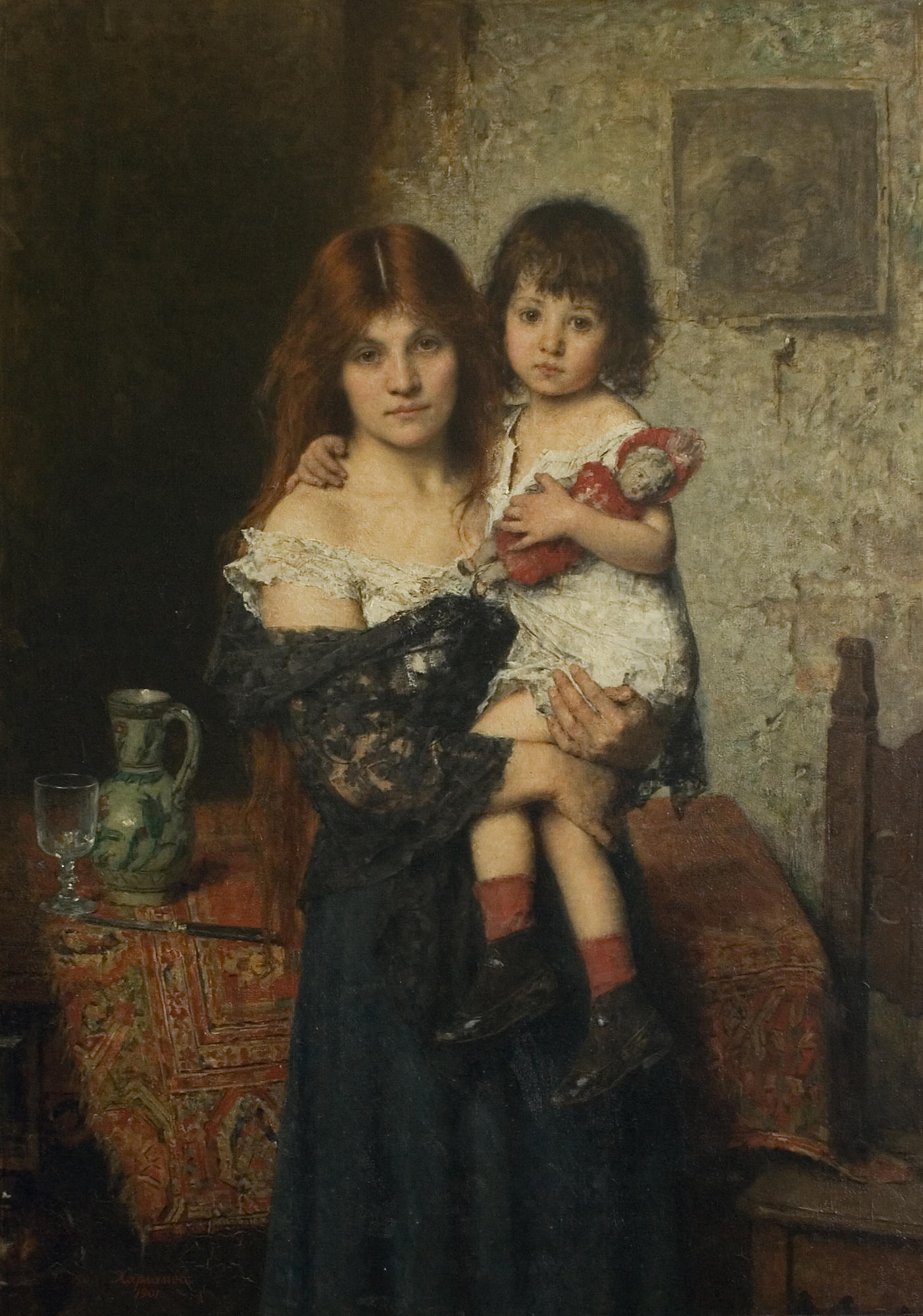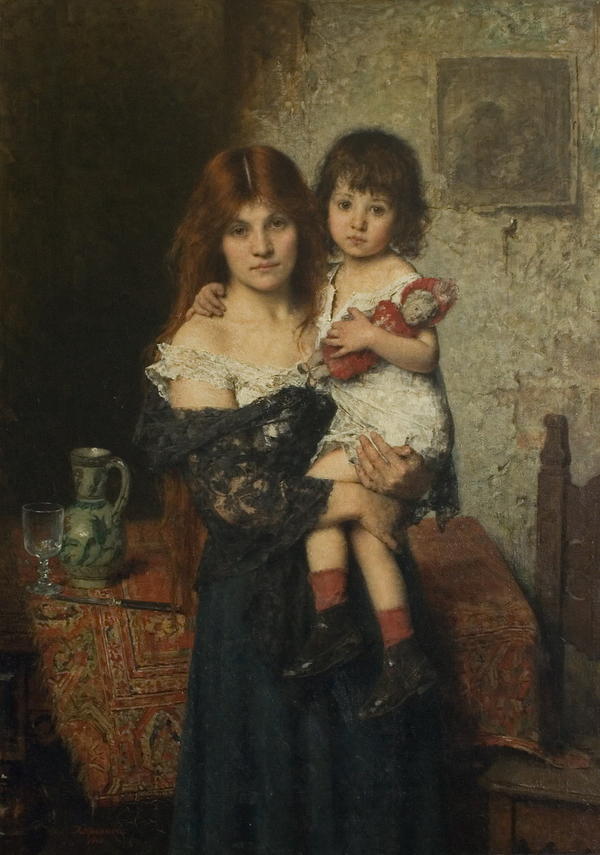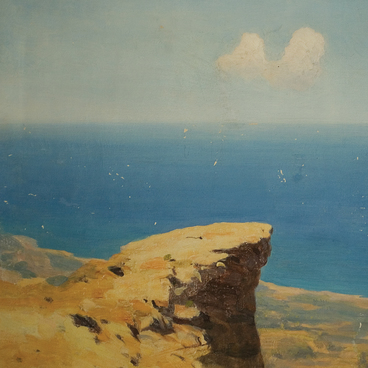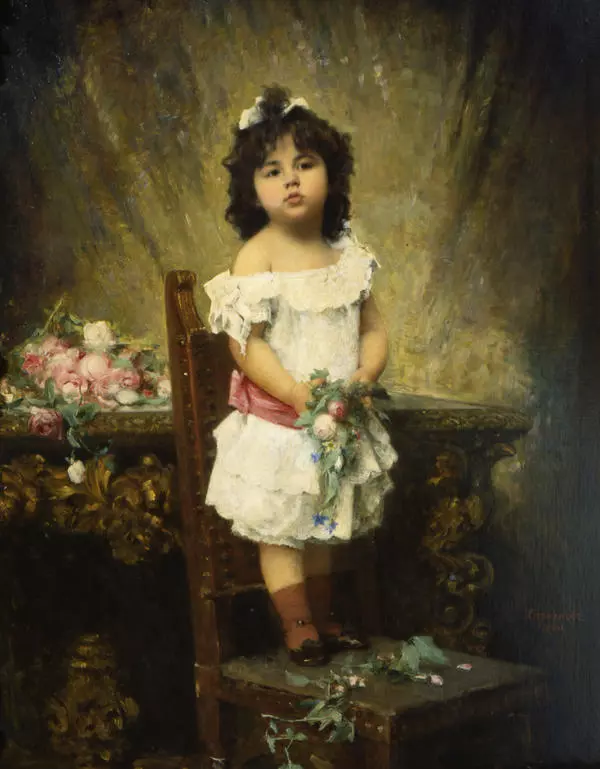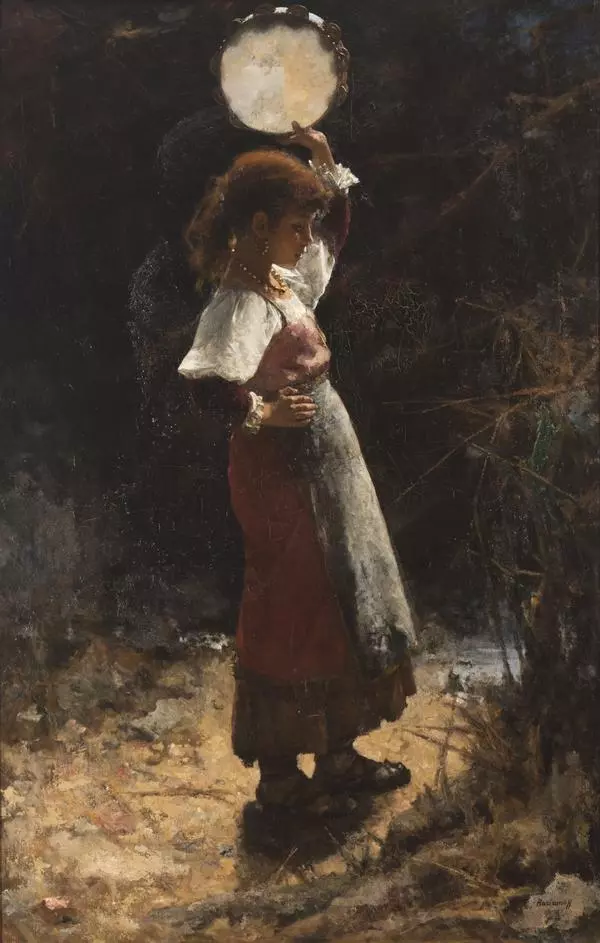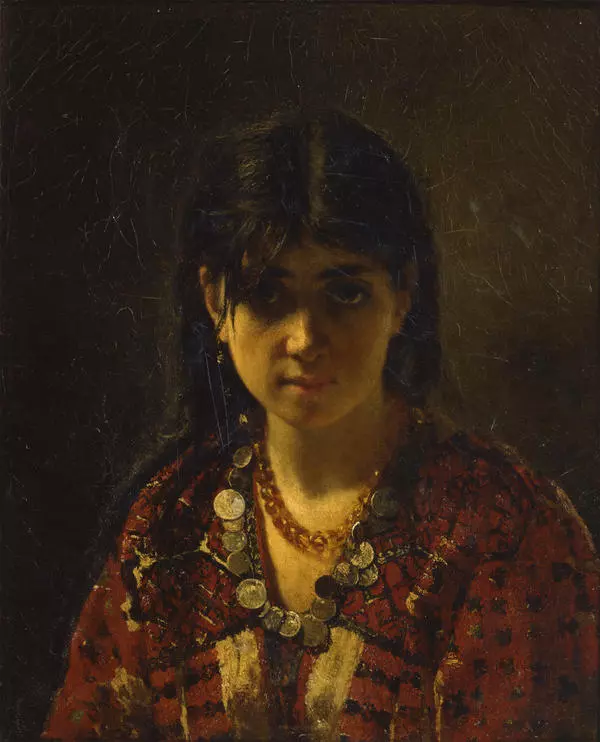Alexey Kharlamov was born in a large family of a bonded peasant. When he turned 10 years old his family was released from the bond and moved to Saint-Petersburg, where Kharlamov started to take painting classes and in 1854 he was admitted into the Emperor’s Academy of Art.
In the 1870s Kharlamov travelled extensively throughout Europe visiting major art galleries and museums. At the request of the Museum of the St. Petersburg Academy of Arts, he created a copy of Rembrandt’s Lesson of Anatomy by Dr. Tulpa. At the same time, Kharlamov joined the Association of Itinerants and began, on a regular basis, sending his works to the itinerants’ expositions in Saint-Petersburg.
Kharlamov soon settled in Paris and became a pupil of the infamous French portrait painter Leon Bonnat, who had greatly influenced the Kharlamov’s own style: Kharlamov deliberately make his works bear resemblance to the 17th-18th centuries Neo-Classic paintings.
Kharlamov painted the companion portrait Mother and Daughter in keeping with the spirit of sentimental stories of the 19th century European literature. The very appearances of the heroines: their subtle features, big expressive eyes, pale, almost translucent skin and spectacularly unruly thick hair stand in striking contrast with the extreme poverty of the surroundings: scarred gray walls, shabby tablecloth, almost empty table. Both mother and daughter look young and touching, and therefore especially vulnerable considering the tough life they are living.
In the 1870s Kharlamov travelled extensively throughout Europe visiting major art galleries and museums. At the request of the Museum of the St. Petersburg Academy of Arts, he created a copy of Rembrandt’s Lesson of Anatomy by Dr. Tulpa. At the same time, Kharlamov joined the Association of Itinerants and began, on a regular basis, sending his works to the itinerants’ expositions in Saint-Petersburg.
Kharlamov soon settled in Paris and became a pupil of the infamous French portrait painter Leon Bonnat, who had greatly influenced the Kharlamov’s own style: Kharlamov deliberately make his works bear resemblance to the 17th-18th centuries Neo-Classic paintings.
Kharlamov painted the companion portrait Mother and Daughter in keeping with the spirit of sentimental stories of the 19th century European literature. The very appearances of the heroines: their subtle features, big expressive eyes, pale, almost translucent skin and spectacularly unruly thick hair stand in striking contrast with the extreme poverty of the surroundings: scarred gray walls, shabby tablecloth, almost empty table. Both mother and daughter look young and touching, and therefore especially vulnerable considering the tough life they are living.
